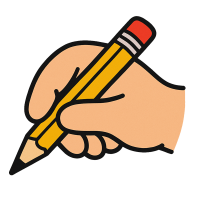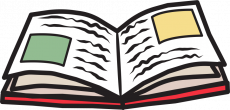The Magic of Letter Writing: A Hands-On KS1 Adventure with Mighty Writer
Introduction: The Importance of Letter Writing in Key Stage One
Letter writing forms a cornerstone in early literacy education, offering a foundation for clear communication and creative expression. It encourages young learners in primary schools to engage with language in a structured yet imaginative way. By introducing letters as both a creative and communicative tool, teachers can nurture essential skills right from the start.
Traditional methods of teaching letter writing often struggle to capture the attention of Key Stage One pupils, resulting in a lack of sustained engagement. In contrast, interactive solutions like the Mighty Writer resource inject excitement into the lesson, as one educator noted, enabling pupils to improve their literacy results "almost overnight". This fresh approach promises to overcome the challenges of conventional methods, making learning both effective and fun.
Learning Objectives and Expected Outcomes
This lesson plan aims to help pupils recognise the structure of letters and grasp basic sentence formation, reinforcing the fundamentals of writing. It encourages children to understand the beginning, middle, and end components of a letter, thereby laying down a clear framework for their written expression. Teachers can expect that utilising these methods will improve writing skills and spark a newfound enthusiasm for creative literacy.
Expected outcomes include not only improved technical writing abilities but also enhanced creative expression among pupils. By engaging with interactive elements, children are motivated to explore different narrative techniques and develop their own unique writing styles. Such improvements are particularly important for underperforming schools, where boosting literacy quickly is a key educational priority.
Materials and Resources Required
For this lesson, teachers will need tangible resources such as the Mighty Writer mat, colourful picture tiles, sentence clouds, and velcro symbols. Each of these components plays a vital role in helping children physically engage with the process of letter writing. The hands-on approach encourages pupils to interact with these elements, making the learning experience both memorable and effective.
In addition to these tactile materials, supplementary resources such as the teacher's guide and CPD training materials are essential to support the delivery of this lesson. The teacher's guide offers a comprehensive lesson plan and background information on the Mighty Writer Resource, including its development and success stories. Meanwhile, ongoing CPD training ensures that educators remain confident and knowledgeable as they implement this engaging literacy strategy.
Lesson Plan for the Letter Writing Activity
Begin the lesson by introducing the concept of letter writing and discussing its importance within the context of early literacy. Present the Mighty Writer mat to the class, highlighting its interactive components such as picture tiles and sentence clouds. Explain how these tiles and sentence clouds help to demystify the structure of a letter, thus setting the stage for creative exploration.
Next, demonstrate how to select and arrange the picture tiles and sentence clouds to form a coherent letter, emphasising the sequence from greeting to closing - green sentence clouds to red. Encourage pupils to work together to discuss their ideas. This collaborative process not only reinforces literacy skills but also builds teamwork and communication among pupils.
Conclude the session by allowing children to independently compose their letters using the provided resources - hand out worksheets to children to write their own letters using the Mighty Writer structure. Teachers can offer guidance and ensure that every pupil is participating actively.
End the lesson with a class review where pupils can share their work, and teachers can highlight achievements and suggest areas for further learning.
Creative Expression and Inclusive Strategies
Promoting creative expression is a key aspect of this lesson plan, allowing children to explore their imaginations while learning essential writing skills. Teachers are encouraged to let pupils' experiment with different ways of organising their thoughts via the interactive tools provided. This approach fuels creativity, making literacy a more engaging and enjoyable experience for every child.
Inclusivity is also at the forefront of the lesson design, ensuring that every pupil, regardless of ability, feels supported and involved. By using group activities and adaptive teaching methods, educators can tailor the lesson to meet individual needs. This strategy ensures that no child is left behind, furthering the goal of creating a positive and inclusive learning environment.
Assessment and Reflection
Assessment during the lesson is a continuous process, with teachers using both formative and summative methods to gauge pupil progress. Through activities such as peer reviews and guided discussions, educators can quickly identify areas where pupils struggle and where they excel. This real-time feedback is invaluable in tailoring future lessons to meet the needs of every student.
Reflection is equally essential, as it allows both pupils and teachers to consider what worked well and what could be improved. Teachers are encouraged to hold reflective discussions at the conclusion of the lesson, using questions that prompt critical thinking and self-assessment. This systematic approach to reflection ensures that the lesson remains dynamic and continuously adapts to the evolving needs of the classroom.
Conclusion: Transforming Literacy Through Fun and Engagement
To summarise, this lesson plan provides a dynamic and interactive approach to teaching letter writing that blends tradition with innovation. It highlights how the Mighty Writer Resource can transform conventional lessons into engaging, hands-on activities that are both fun and effective. The integration of structured learning objectives with creative exercises ensures that pupils not only learn but also enjoy the process of writing.
By empowering teachers with the right tools and strategies, this approach has the potential to significantly improve classroom literacy outcomes. Ultimately, the combination of interactive resources and supportive teaching methods creates a lasting and positive impact on the educational journey of every pupil.
